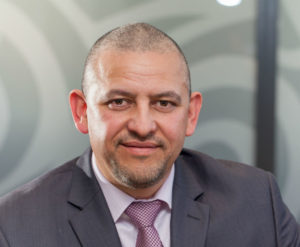Accessing customary land for development in Papua New Guinea continues to be a challenge, while difficulties remain with securing finance against that land. Meanwhile, in New Zealand, Maori landowners are forging ahead with joint ventures, using leases as security and pooling financial resources. Kevin McQuillan investigates how it’s done, in the first of a two-part series.

The JV Mokai geothermal plant. Credit: Tuaropaki Trust
There’s nothing like seeing success to build even more success, says Jason Paul Mika, Lecturer in Maori Entrepreneurship and Management at Massey University in New Zealand.
‘Not since the burgeoning tribal economies of the first half of the 19th century, when surpluses from hapu-based (sub-tribal) enterprises sustained settlers and tribes, has entrepreneurship been viewed as an appealing possibility among Māori,’ he tells Business Advantage PNG.
Bankers, investors and suppliers are drawn to Māori enterprises as potential partners, eager to understand how to modify their offerings and methods with this market in mind, he says. More than 21,500 small and medium-sized enterprises now manage NZ$50 billion (K117 billion) in assets.

Massey University’s Jason Mika
But he agrees it’s really difficult to obtain finance for Maori land development because of legislative barriers that are in place.
‘And they’re in place for good reason: to protect Maori ownership of the land, but the banks and land trusts and incorporations have found ways of addressing that.’
Trusts are used to promote the use and administration of Māori-owned land, often for commercial purposes.
There are a total of 17,567 Maori trusts, according to the NZ Law Commission.
There are three basic ways trusts can access finance for Maori freehold land development: joint ventures, leasing and the pooling of resources.
Earlier, philosophical opposition to long-term leasing of Maori land arrived with colonising settlers in the nineteenth century but now appears to be diminishing as an issue, according to Craig Linkhorn, Co-editor of Maori Law Review.
‘For smaller scale use, such as residential housing, schemes have developed whereby the security might be held over the building itself so that if the borrower defaults it could be removed from the site if need be,’ he told Business Advantage PNG.
Joint venture for geothermal power
A prime joint venture example is the Tuaropaki Trust’s Mokai geothermal power station, just north of Taupo in the central North Island.
The 2,000 owners were originally farmers but in the 1990s saw an opportunity to develop geothermal power.
‘They struck the problem of financing the project,’ says Mika. ‘The local banks and investors weren’t too keen on it, so they went on a worldwide mission looking for finance and people to build a geothermal plant on their land.
‘They found a builder willing to 100 per cent debt finance the construction of the plant and it has now been paid off and the whole venture has grown.’
Leases

Maori Law Review Co-Editor, Craig Linkhorn
‘Some tribes have reasons to want to break free of the comparatively heavily regulated ways in which Maori freehold land can be managed,’ says Linkhorn.
‘So owners sometimes apply to change the status of Maori freehold land to General land permanently, or temporarily.’
Earlier this year, Mangatawa Papamoa Blocks Incorporation successfully applied to the Court to temporarily change the status of two blocks of their Maori freehold land to General land after difficulties in securing majority support for the development proposal, says Linkhorn.
The Incorporation owns various blocks of Māori freehold land in the Bay of Plenty in the North Island, and are involved in farming, kiwifruit, leasing of lands and a retirement village. Their net equity is estimated at NZ66 million.
They plan to develop more retirement villages, and by changing the status of the land, they are now seeking an approved long-term lease and associated security for finance which could be registered against the land.
Pooling finance
Another avenue for funds is the recently created Iwi/Māori Direct Investment Fund (IMDIF), a recognition of the power of pooling finance. An agreement between Maori Investment fund, Te Puia Tapapa Fund, and NZ’s sovereign wealth fund, NZ Super (worth some NZ$38 billion) will see the IMDIF and NZ Super working together on new investment avenues.
To date, NZ$110 million has been committed to the fund by tribes who have settled their claims under the 1840 Treaty of Waitangi and have been compensated for the loss of parts of their land and usage.
The Maori Economy in a nutshell
Māori make up 15 % of the NZ population; 70% are younger than 40.
Māori control NZ$50billion (K117bn) in assets, or 6% of NZ’s total asset base.
Māori businesses contributed NZ$26 billion (K55bn) in revenue to the New Zealand economy in 2015.
Māori control an estimated total of 1.48 million hectares of land, either under private ownership or as registered Māori land. About one-third of this land is yet to be developed.
Māori own NZ$13 billion (K30bn) in primary sector assets, including 30% of New Zealand’s lamb production, 30% of sheep and beef production, 10% of milk production, 50% of fishing quotas, 30% of plantation forests.
Māori trusts will invest about NZ$2 billion (K4.7bn) per year over the next 10 years through joint ventures and partnerships.
This is the first article in a two-part series. In part two next week, we talk to a former banker who set up the financing of Maori trusts’ tradeable assets.








Speak Your Mind